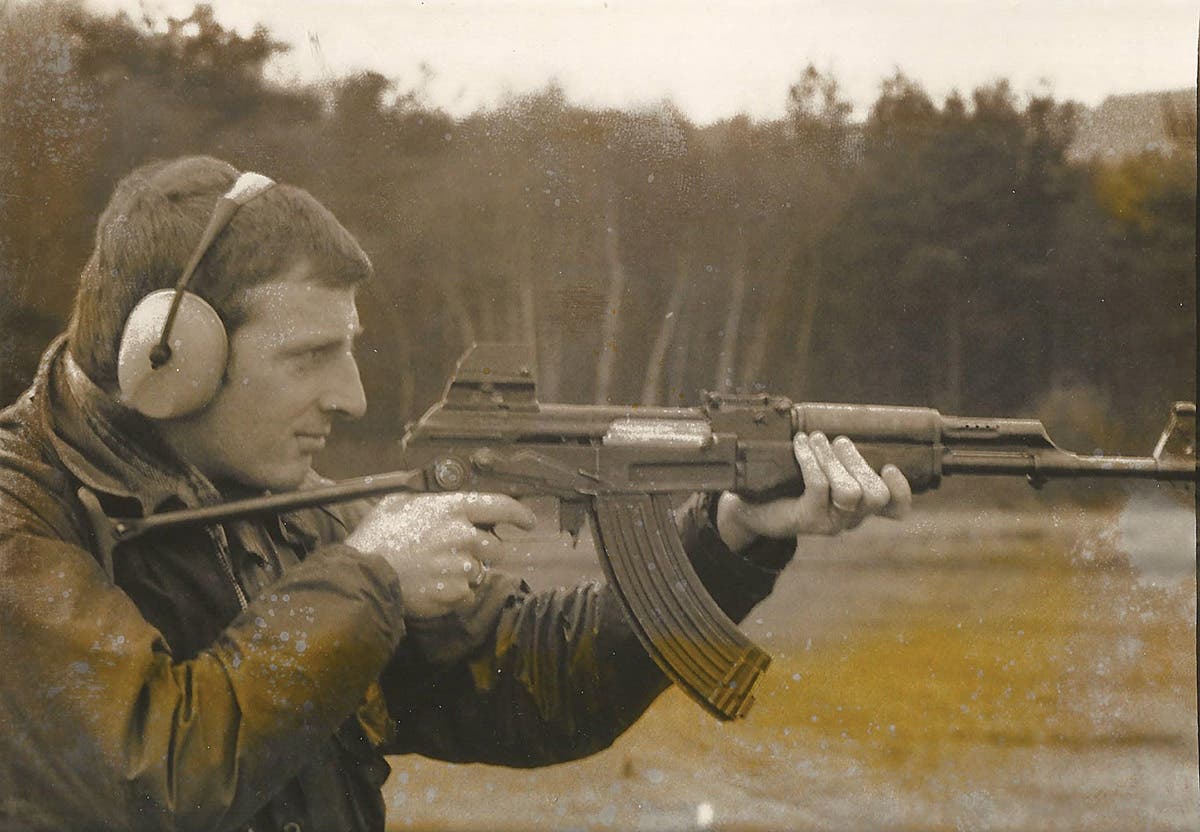Stepping on hallowed ground at Colleville – St. Laurent
Visiting the Colleville – St. Laurent cemetery reminds one of history and sacrifice.
The opening scenes to the 1998 award-winning movie Saving Private Ryan by Steven Spielberg show a family walking in silence through a cemetery. It is a poignant and very moving part of the film, made all the more so when viewers understand that the location is a real place and the white marble crosses are actual grave markers. Most people will know by now that the cemetery lies on the bluffs overlooking a stretch of the Normandy coastline in France, codenamed “Omaha Beach”, where the 1st US Infantry Division began to land at 06-30AM on D-Day, June 6, 1944.
The landing beach measured four miles wide and was sub-divided into named areas, beginning with “Charlie” and “Dog” in the west, which were in turn divided into red and green color-coded areas. A force of 34,250 men in successive waves landed on the stretch of coast, along with their tanks and equipment, making it the largest force out of the five beaches. What happened there that day has come to be known as ‘“Bloody Omaha” and described by veterans as “Hell” Part of the terrible tragedy which unfolded, costing the lives of some 3,880 men, is shown in Spielberg’s movie and is probably the closest any director has gotten to recreating anything approaching what it was like on that day.
During the planning stage of D-Day two sites had been allocated as burial sites, but on the evening of June 6, these areas had not been captured. It was men from the 453rd Medical Collecting Company who began gathering up the dead and, treating them with reverence, laid them at the base of the bluffs up which troops from the “Big Red One” had struggled and fought to capture. The following day revealed more of the human cost. At around 8:30 a.m., just 26 hours after the landings, a bulldozer was used to excavate proper burial sites. Men from the Graves Registration Unit were joined by Quartermaster Companies, along with captured Germans POWs to assist, who undertook the task of interring the fallen along the shoreline. Within days there were several hundred burials, including American, British and German in what was called “V Corps Cemetery”.
Three weeks after the landings, with the beach heads linked up, the Allies had moved further inland, allowing another burial site to be established at the top of the bluff, to the east of Le Ruquet. This was called “Provisional Cemetery No.2”. where 1,510 Americans, 48 British and 606 Germans were buried. The Graves Registration Service oversaw the burials and gave instructions concerning identification and gathering personal possessions. Another cemetery was established near the town of Sainte-Mère-Eglise and would eventually contain more than 12,700 American graves. At Orglandes another site had been designated as an American cemetery, but later it was decided it should become a purely German military cemetery. Other American cemeteries were established and by April 1945 there were 24 such sites containing 76,360 graves of U.S. troops.
On Nov. 4, 1948 burials resumed when a new grave was dug at Colleville-Saint-Laurent — a site covering 172 acres presented in perpetuity to the United States by the grateful French government. Mostly these were re-interments of those which had been removed from their original burial site and brought to the new location. By December 1949 there were 9,350 burials at the site. The figure would have been much higher, but some families had requested the bodies of their loved ones be repatriated, with almost 18,000 being transported through the port of Cherbourg alone.
Today there are 9,388 graves Colleville-St Laurent, all from WWII except one. The exception is Lieutenant Quentin Roosevelt, a pilot killed in WWI, who, at the behest of the family, was reburied next to his brother, Brigadier General Theodore Roosevelt, one of three Medal of Honor holders buried in the cemetery. Brig. Gen. Roosevelt died of a heart attack on July 12, 1944, having led IV Infantry Division ashore on Utah Beach. There are 307 unknown and a further 1,557 names commemorated of those who have no known grave or were buried at sea. Each grave of those of Protestant or Catholic faith is marked with a Latin cross. There are 151 graves marked with a Star of David to identify those of the Jewish faith.
The cemetery is laid out running east to west along the coastline overlooking the area designated as “Easy Red” sector, where the 16th Infantry Regiment landed. At the east end laid out in a semi-circular design is the Wall of the Missing, some of which have small bronze discs appended to denote they have been identified and have a marked grave. Flights of stone steps led up from this point to the main cemetery concentration area, which is dived up and laid out in 10 squares down which runs a pathway. About two-thirds of the way stands the chapel and the point where another pathway is laid out running north to south, to make a cruciform layout of the paths as they intersect.
Each year, well over 2 million people visit this cemetery, ranging from school trips to organized battlefield tours and those whose relatives fought and are buried here. The site is administered by the American Battle Monument Commission, which cares for all 24 of the overseas cemeteries. Staff members are on site to answer questions and direct visitors to the location of a relative.
Among those buried here are three generals, four chaplains, four female service personnel and 147 African-Americans. A visitor center contains a permanent exhibition with various items on display including photographs and personal accounts. Visitors going into this section are subject to airport-style security measures, but the slight delay while hand luggage is checked is more than compensated for by the experience.
It is a very moving and humbling experience to stand in the cemetery, as indeed it is in any military cemetery in Normandy, lying as it does in such close proximity to surviving German defenses within walking distance. This is a unique site and relatives paying their respects and other visitor can become absorbed for hours just looking around.
For example, at the spot called “Dawson Point”, an uninterrupted panoramic view across the whole expanse of the beach is afforded. The spot is named after Lt. Francis Dawson of the 5th Rangers who was one of the first men to fight his way to the top of the bluff. For his endeavors he was awarded the Distinguished Service Cross. It is incidents like this and the stories behind the Medal of Honor winners, Tech. Sgt. Frank Preregory of the 3rd Battalion, 116th Infantry Regiment, and Lt. Jimmie W. Montieth, both buried here, that visitors wish to hear about.
However, there is also a story to tell behind each man and woman buried in the cemetery. There are 45 pairs of brothers buried here, including Preston and Robert Niland, serving as a lieutenant with the 22nd Infantry Regiment and technical sergeant with the 82nd Airborne, respectively. Two other Niland brothers, Technical Sergeant Edward, USAAF and Technical Sergeant Frederick, 101st Airborne Division, both survived. It is the story of this set of four brothers which makes theirs the strongest contender for inspiring the story in Saving Private Ryan.
At the eastern end of the cemetery a reflective pool is laid out and leads up to a statue commemorating “‘the spirit of American youth”. It is here that visitors often stand in contemplation, no doubt awed by the rows of white “Lasa” marble crosses. The chapel, many statues and tree-lined avenues give the cemetery the air of peace, but the hard reality is this was part of the battleground which many of those buried here fought over. The numbers of veterans are getting fewer in number with each passing year, but there will be some who will make the journey this year to mark 80 years since the events of that day in June 1944. No trip to the D-Day beaches would be complete without visiting the Colleville-St Laurent cemetery, regardless of nationality.
An intriguing feature is the “time capsule” which has been buried at the site and is due to be opened on June 6, 2044. It is hard not to think ahead and wonder what that generation will make of it all.





